Not Your Average Pyramid
To get started let’s take a brief step back…what is a brand? In business and marketing, a company’s brand isn’t something tangible, it’s what people think of when they hear your company’s name. In other words their perception of your tour company and everything it stands for. It’s why some people consider Coca-Cola a classic and Pepsi as more trendy. While the product itself is quite similar, how the companies present themselves is quite distinct. In the tourism world, when you hear the name Airbnb, Expedia, TripAdvisor…beyond what these companies actually do, that reaction or feeling that you have when thinking about them, that’s where the branding comes into the picture. Your company’s brand should be felt from the first moment that someone visits your website, when looking at your photos, and when reading your tour descriptions.
The original concept of the brand pyramid dates back to the 1990s where it was created by marketing research firm Millward Brown. Over the years it has undergone adjustments(opens in a new tab), but the overall idea remains the same. Breaking down your product or service allows you to better understand it in order to be able to better market it. While the brand pyramid is typically used for products, and there have since been multiple interpretations of the branding pyramid, we’ve taken that into account when compiling this specific tour-operator interpretation.
What is the Branding Pyramid?
A brand pyramid is a breakdown of a product or service in terms of what it is, who it serves, what are the benefits, why it is better than competitors, and what it stands for. By taking a look at the various attributes of a product or service its overall value is clearly identifiable and allows you to better understand it in order to then better market it.
1- Features and Attributes
Some argue that the first level of the pyramid is the mere existence or presence of your brand. For us, the attributes and features are the base and fundamental level of your brand. This core level consists of what your service actually is (tours, activity, rentals, etc.), what is your price point, and where are you located.
How do you show off your features and attributes? A great place to start is to have your online presence spread out over both your website and social media. Make relevant profiles on Google My Business, TripAdvisor, and if you’re interested, on OTAs.
Letting people know you exist is the first step to them connecting with your brand. If you’re a new business or considering a rebrand, a simple way to indicate your business’s basic features or attribute include the location in the company’s name (city, country, or language) or the type of tour (words like excursion, expedition, adventure, tour). Beyond the company name, the first impression or identification can be given by the information that you include above the fold.(opens in a new tab) Here visitors are told additional information about the type of tour or activities, location, and atmosphere they can expect.
Take a look at these logos and company names, likely the first thing that a business comes up with it lets people know basic information about the business.
Tours Around Michigan(opens in a new tab) says it all: they offer tours, and the location in which they are based.

When it comes to MTL Detours(opens in a new tab), we expect they are leading tours that are a little bit different and off the beaten track.
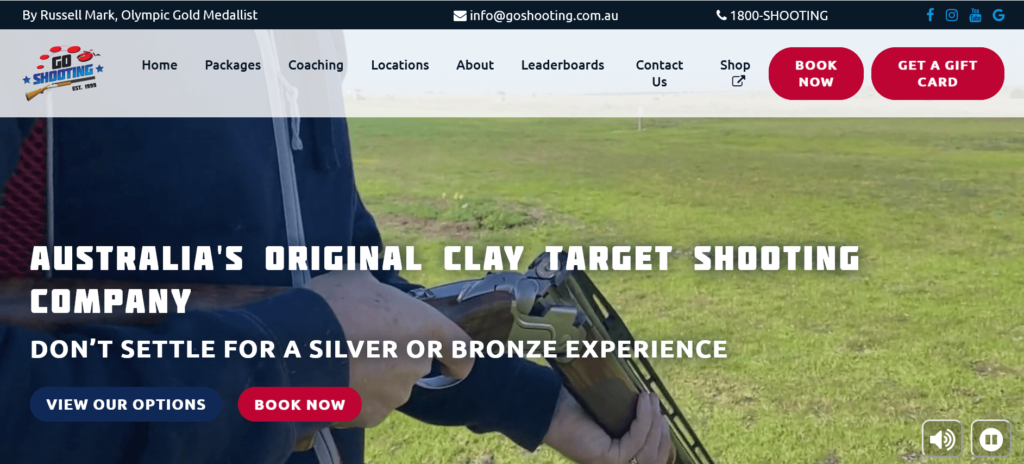
Go Shooting(opens in a new tab) clearly identifies their activity type and location. Then they also show their credibility with a mention to medals given that it is in part run by an Olympic Gold Medalist, which you immediately know when landing on their site transitioning from the first tier to the second tier of the pyramid.
2- Functional Benefits
This is how your brand is different. You offer tours, so what does a person stand to gain from taking a tour with you as opposed to your competitor. Spell it out. They’ll get a professional’s insight into the location, they’ll get to know the city better, they’ll discover new wineries or eateries, they’ll try a new experience, or they’ll get expertly organised itineraries that suit their interests, whether that’s a weekend staycation, or a holiday getaway… Value for money can also be a functional benefit. The fact that your tours cater to families, seniors, that you can accommodate dietary restrictions on your food tours, or that your tours are available in another language. These are all qualities that will attract a target audience and set you apart from the crowd.
So how can you show off your functional benefits? In addition to listing that you can accommodate guests with special needs or requirements, consider having your website in multiple languages. Other examples are showing off the equipment such as your bikes or your vehicles to highlight the quality experience you provide. Display memberships, accolades, public mentions, accreditations, or certifications in order to showcase your brand’s credibility (this can also tie in well with the next stage of the pyramid). When it comes to comparing your business with your competitors, this is where price, location, what’s included, availability, season, pick-up and drop-off set you apart. Perhaps you offer your tours both the morning and afternoon; let people know that they have this choice. If a guest can be picked up from their accommodation that may be a difference-maker compared to a tour that simply has a meeting point.
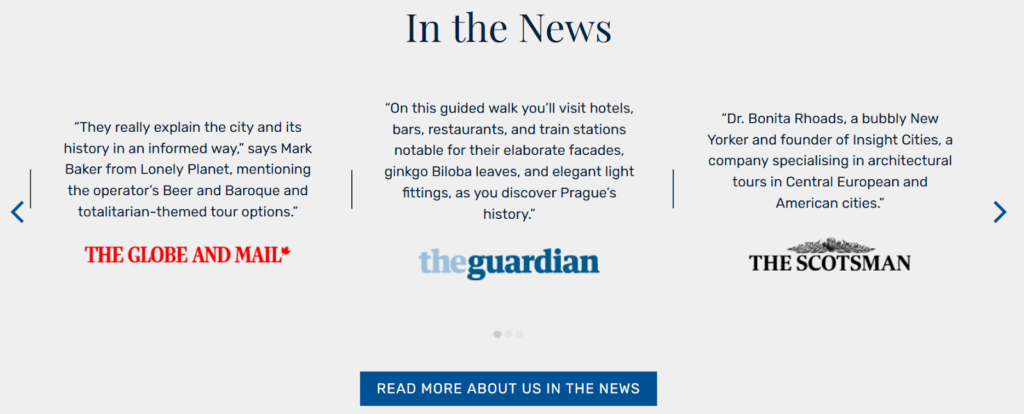
Insight Cities(opens in a new tab) has an “In the News” section on their website’s homepage which links to publications in which they are mentioned.
3- Emotional Benefits
This is the emotional response to your brand. It’s the next layer of what the tour-taker stands to gain from taking your tour: the memories they’ll make, the fantastic and unique experience they’ll have, and more. In this case, when comparing your business to your competitors it’s about showing photos of the great time that your guests are having.
Help your potential customers imagine themselves taking one of your tours and having the same fantastic experience. Among the photos we always recommend tour operators have on their site are photos of customers having fun on the tours. Another option is to highlight any special initiatives that you are part of. Do you practice regenerative tourism(opens in a new tab), are you aligned with any environmental, local, or cultural initiatives?
While this does not actually add to the monetary value of your tour, it adds to the value of the overall offering and if the tour is similar to your competitor, this extra element will help set you apart. Because why not enjoy a tour while also helping the whales, for example. A final way to tap into the emotional benefits is through the choice of language. In this case the right adjectives are what takes well-written copy and adds that extra “je ne sais quoi” that guests subconsciously take in.
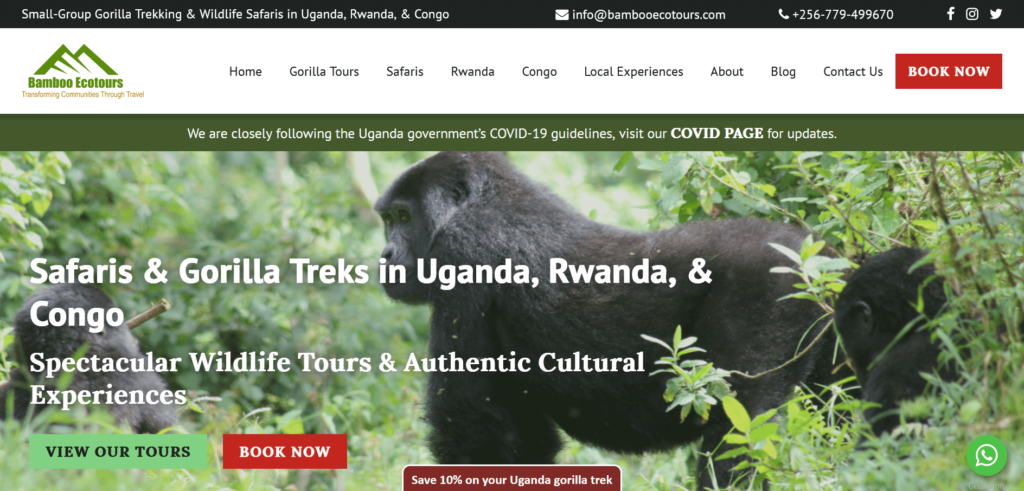
As you can see with Bamboo Ecotours(opens in a new tab), while the text states that they offer tours and cultural experiences notice the difference it makes when you add the words “spectacular” and “authentic” these words clearly provoke a reaction in the site visitor, tapping into the emotional response. However, it should be noted that while adjectives are a powerful tool they should be used sparingly and with clear intent as too many descriptive terms can, in turn, seem disingenuous
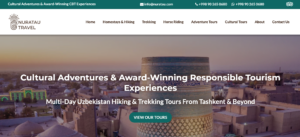
Narutau Travel(opens in a new tab) is another example of a brand identity clearly articulating what they offer, and eliciting an emotional response.
4- Resonance / Brand Personality
When it comes to showing off your brand resonance (how well customers relate to your product or business), in addition to photos of your guests, your best resource is reviews and other online interactions such as comments on your social media profiles.
When it comes to showing off your brand personality (the human characteristics related to your brand) this can be done in many ways. Fundamentally, the design of your website should reflect the brand’s personality. The design elements (color palette, fonts, and icons) for a food tour company will certainly be different to those of a luxury boat tour or a multi-day outdoor excursion. Another great way to show some additional personality is in your about us section. This is the part of the website where customers have their first “encounter” with you as an owner or your guides before actually contacting you. Although it may seem superficial, if you put out “fun vibes”, for example, customers will connect with this and make the association of that emotion with your tours.
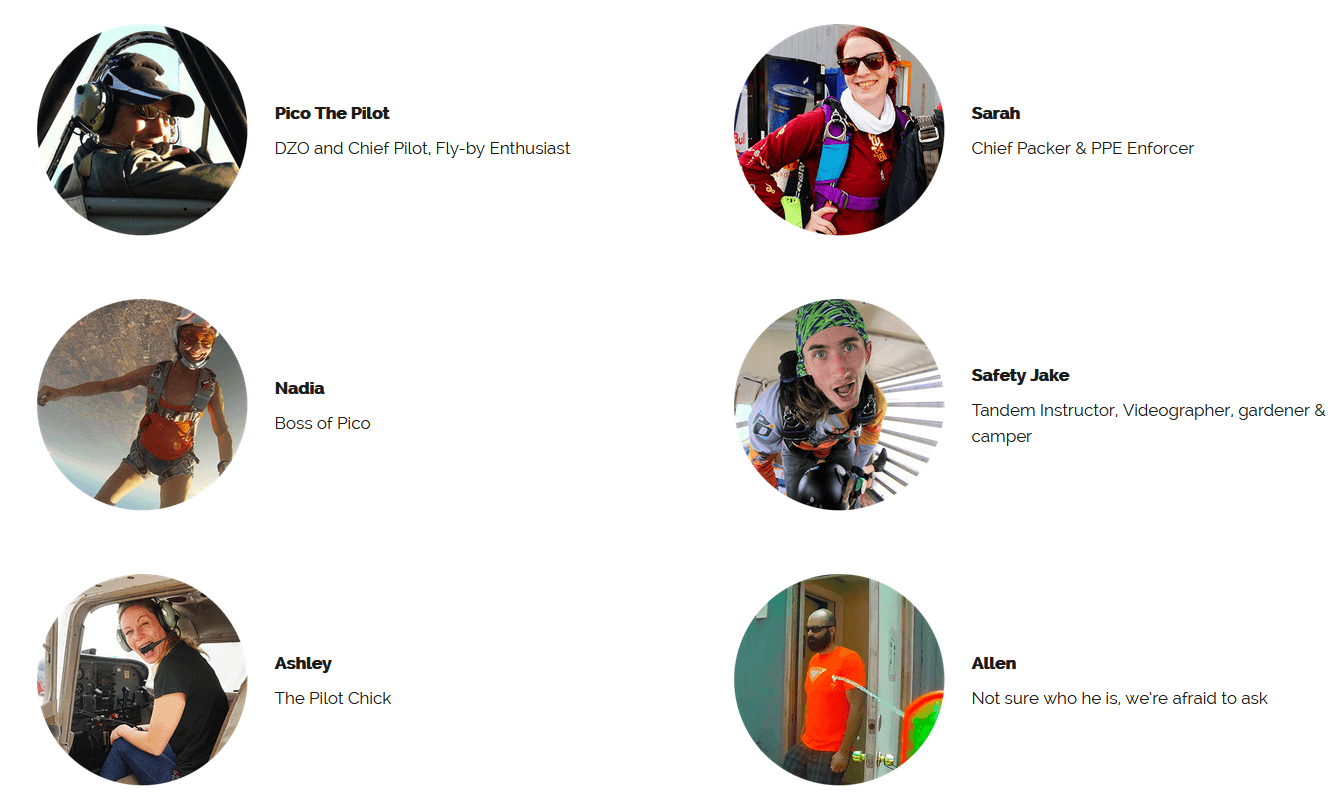
As Skydive Cross Keys(opens in a new tab) is all about having fun, they’ve added some humor into their team members’ descriptions.
5- Essence / Core values
This is the apex of your brand pyramid, the cherry on top of your metaphorical tour company sundae. The simplest way to narrow down your brand essence or core values is to think of one to three words (or a very simple singular phrase) that describe your business: safety, luxury, adventure, discovery, sustainability, family, outdoors, exploration, etc. By summarizing your business in these key terms you’ve filtered out everything else into the purest iteration of what your brand stands for.
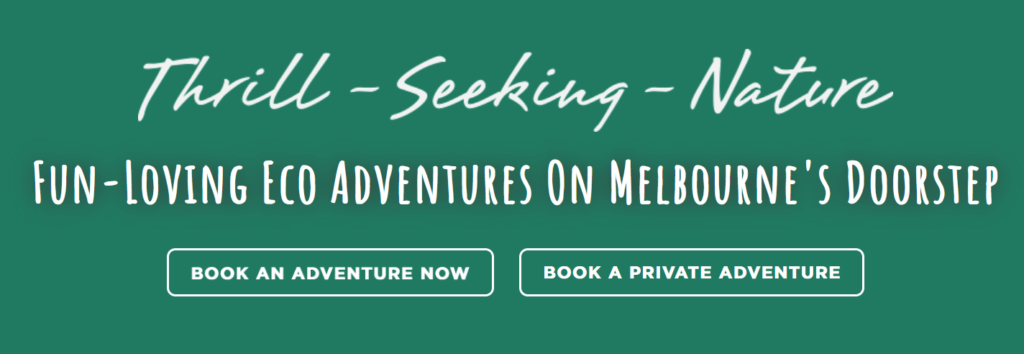
Wild Adventures Melbourne(opens in a new tab) for example has identified three words that they feel summarize their brand and they choose to put front and center on their website. While you don’t necessarily have to share your core value in such a literal sense, identifying these terms is about reminding yourself what you stand for, and then injecting that into your content.
Why Should Tour Operators Even Care About a Brand Pyramid?
That’s an excellent question. Theory or concepts can feel so disconnected from everyday lived reality. And there are times where that’s definitely true. Tour operators should care about a brand pyramid because it helps you to take a step back and evaluate your business within an existing framework. You’re emotionally invested in your business but this type of exercise allows you to take off your potentially rose-tinted glasses and take an objective look at your business and what it stands for.
It’s a great exercise if you’re just starting out and you’re trying to map out your brand identity, and it’s a valuable tool for re-evaluating your brand identity or simply reminding yourself what your business embodies. Remember that the lower levels of the pyramid may not offer a lot of differentiation from your competitors or even other tour companies in general. But the higher you go, you’ll find the elements that help you to stand out.
Working your way through the pyramid layers from bottom to top will help with your understanding of your own business. And there are multiple possible benefits to this, improving your ability to explain your brand provides potential for additional partnerships, grants, or investments, it’s valuable for joining associations, or even for presenting your business to your local tourism board. Beyond this, it allows you to better market and sell your offerings to your customers.
If you are looking to take this exercise to the next step, get in touch(opens in a new tab) with us to discuss integrating your brand identity into a new website for your business.
[Updated January 2024]
